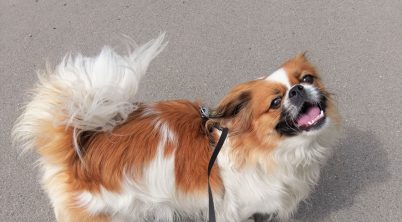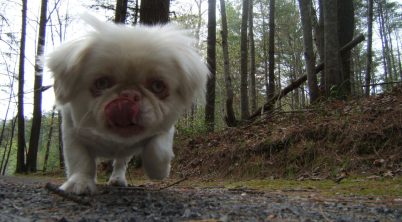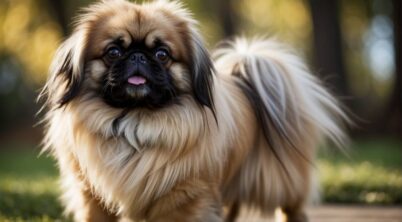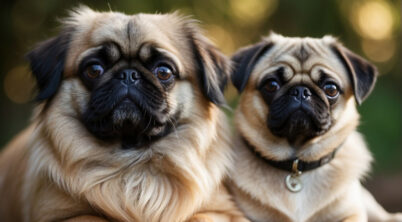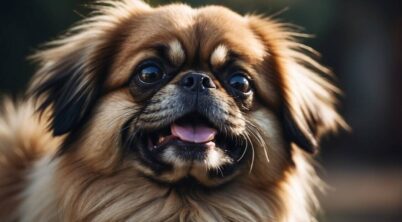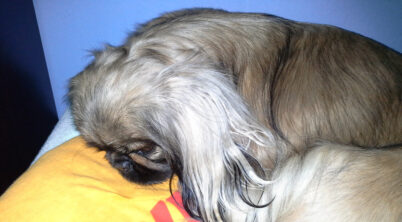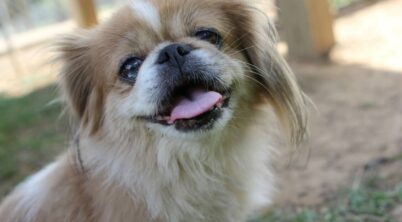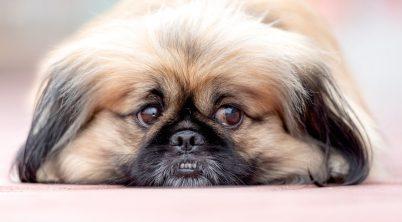The Pekingese, a breed steeped in rich history and regal bearing, originates from the ancient land of China. Often referred to as the “lion dog” due to its luxuriant mane and bold demeanor, this toy breed has long been associated with Buddhist monasteries, where it was revered as a reflection of the mythical lion that followed Buddha. With an imperial lineage, the Pekingese was once a guarded treasure of Chinese royalty, keeping company with emperors and empresses and treated with the highest esteem. The breed’s journey to the Western world is said to have begun when five of these revered dogs were taken from the Summer Palace in Beijing and presented to Queen Victoria during the Second Opium War, marking the start of the breed’s global presence.
Show quality Pekingese dogs carry the air of their noble ancestry with a well-balanced and compact physique. They exemplify the breed’s characteristic confidence, independence, and self-esteem, traits that are deeply embedded in their temperament. The distinct appearance of the Pekingese, from its flat face and wide eyes to the dense double coat that frames its body, is a product of meticulous breeding and adherence to the strict standards set forth by kennel clubs and breed organizations. Breeders who specialize in show quality Pekingese focus not only on the dog’s regal looks but also on its health and character, ensuring that the dogs are not only a pleasure to behold but also well-socialized companions.
The Pekingese Club of America, among other organizations, sustains the breed’s storied legacy within the show dog community. The club encourages ethical breeding practices, providing guidance and setting benchmarks for breeders who aim to produce Pekingese that are both true to their heritage and fit for modern pet owners seeking show prospects or lifelong companions. The club’s emphasis on health guarantees and a commitment to the welfare of the breed echoes the Pekingese’s historical role as a cherished symbol of aristocracy and offers reassurance to those who choose to bring these dignified canines into their homes.
Table of Contents
Show Quality Pekingese
Show-quality Pekingese dogs are a testament to the breed’s storied history and distinctive characteristics. Possessing a royal and aristocratic heritage, these dogs are not just pets but living symbols of their imperial legacy. Judges at dog shows evaluate Pekingese against a standard that includes both physical traits and temperament.
Key Traits of Show-Quality Pekingese:
- Heritage: They often exhibit traits aligned with their noble origins, comporting themselves with dignity and grace.
- Physique: Show-quality Pekingese have a compact, well-balanced body with a characteristic rolling gait. The breed standard calls for a pear-shaped body, heavy front with a lighter rear, and a lion-like mane.
- Coat: Their coat is long, thick, and comes in various colors. The quality, texture, and maintenance of their coat are assessed in shows.
- Facial Features: Their face is flat with a distinctive “lion’s mane” of fur surrounding it, including large, dark, expressive eyes and a black, flat nose.
- Size: They typically adhere to the breed standard weights, with smaller “Sleeve Pekingese” sought after for their tinier stature.
- Temperament: Although Pekingese are small, they should display a courageous character, without showing signs of aggression or shyness.
Price Expectation:
| Pet Quality | Show Quality |
|---|---|
| $400 – $1,500 | Up to $3,000+ |
Prices reflect lineage and conformity to the breed standard. Show-quality Pekingese often command a premium, especially those with rare markings or exceptional pedigrees. Breeders aim to bring out the best of the breed’s characteristics, prioritizing health, structure, and temperament suitable for family integration and competition excellence.
Breed Characteristics
In assessing show quality Pekingese, two critical aspects demand attention: their distinct physical appearance and adherence to the breed standard. These aspects set the stage for the breed’s presence in the show ring.
Physical Appearance
Head: Central to the Pekingese’s allure is its head, marked by a short, brachycephalic snout, large, expressive eyes, and a noticeable V-shaped facial wrinkle. The breed’s facial features should present a flat face and not show the whites of the eyes in a standard front view.
Body: They are compact with a stocky build, and their height ranges from 6 to 9 inches. A Pekingese’s weight should not exceed 14 pounds, maintaining a proportionate balance between height and weight.
Coat: The double coat is a defining trait of the Pekingese, with the outer coat being long and coarse and the undercoat soft and thick. Regular grooming is crucial to maintaining the characteristic “lion’s mane” around the neck and shoulder area.
Tail: The tail is an extension of the spine and should be set high, arching over the back with an abundant plume of fur that complements the overall silhouette.
Breed Standard
Height and Weight: Judges look for a height at the shoulder of 6 to 9 inches. A sturdy, well-balanced physique is preferred over mere diminutive size, with weight correlating to overall body proportion.
Coat Color: A variety of coat colors are acceptable, including white, fawn, cream, and black, among others. The breed can exhibit solid colors, parti-colors, or combinations, often complemented by a black mask.
Fur Texture: Fur should appear long and straight, forming a noticeable mane around the dog’s shoulders, imparting an overall lion-like appearance that aligns with the breed’s dignified posture.
Overall Structure: Judges seek a well-balanced structure with a rolling gait indicative of the breed’s heritage and stature. Noteworthy is the slightly bowed limb that contributes to their unique movement.
Behavior and Temperament
A Show quality Pekingese showcases a distinct behavior and temperament that is both regal and companionable. These dogs are known for their affectionate nature and loyalty, yet they may exhibit a stubborn streak.
Personality Traits
The Pekingese, a toy breed once revered in ancient Chinese courts, exhibits a confident and self-assured demeanor. They are intelligent and have a sturdy constitution, often described as surprisingly tough for their size. Despite their affectionate behavior towards their owners, these dogs can be independent and may display stubbornness, especially during training sessions. Care should be taken to nurture their loyal and loving companionship while keeping any aggressive tendencies in check through proper training and socialization.
- Affection Level: High, often forming strong bonds with their owners.
- Intelligence: Pekingese are sharp and quick to learn, though their willful nature could pose a challenge.
- Stubbornness: Pekingese can be headstrong, which requires patience in training.
- Playfulness: They enjoy playful interactions but tend to have a low to moderate energy level.
- Loyalty: Known for their deep sense of loyalty, often becoming a devoted part of the family.
Socialization Needs
Given their royal heritage, Pekingese may tend towards being reserved with strangers. It’s essential to introduce them to a variety of people and environments early on to prevent defensive behavior.
- Sleeve Dog History: The Pekingese has origins as a “sleeve dog,” and thus can require closeness and companionship from their owners.
- Exercise Needs: They have modest exercise requirements and can often meet their energy levels with indoor play, though short daily walks are beneficial for their health.
Socializing them properly will ensure that their natural alertness does not develop into aggression towards other animals or unfamiliar people. A well-socialized Pekingese is more likely to exhibit balance in behavior, remaining both a dignified presence and a joyful playmate within the home.
Care and Ownership
Proper care and ownership of a show quality Pekingese are paramount, with grooming and health management being the cornerstones of maintaining its prestigious appearance and well-being. Grooming is an extensive but essential part of a Pekingese’s life due to its luxurious double coat, while a balanced diet and keen attention to potential health concerns are critical for its longevity.
Grooming Essentials
A Pekingese requires diligent grooming to maintain its show-quality appearance. Owners should brush the dog’s coat at least once a day to prevent matting and to keep the fur looking its best. The long, coarse outer coat and thick, soft undercoat can trap dirt and debris, so regular baths are also necessary but should not be so frequent as to dry out the skin.
- Daily brushing: Use a bristle brush for the outer coat and a softer brush for the undercoat.
- Bathing: Once every 3-4 weeks, or as needed, with a mild dog shampoo.
Nail trims and ear cleanings are also part of the grooming routine to ensure the dog does not develop any infections or discomfort. Due to their facial structure, they require regular cleaning of the folds around their face to prevent irritation or infection.
Health and Nutrition
A balanced diet is crucial for a Pekingese. It helps maintain energy levels suitable for their exercise needs and contributes to overall health. Owners need to offer a diet rich in nutrients with a proper balance of protein, fats, and carbohydrates, tailored to the dog’s age, weight, and activity level.
- High-quality dog food: Can be commercially produced or home-prepared, under veterinary guidance.
- Controlled portion sizes: To avoid obesity, which Pekingese are prone to due to their small size and lower energy levels.
Show quality Pekingese may be susceptible to certain health issues such as intervertebral disc disease (IVDD). Owners should be vigilant for signs of back pain or problems with movement, which are telltale signs of IVDD, and seek veterinary care immediately if these symptoms appear.
- Regular vet check-ups: At least once a year for routine exams and to monitor health.
- Exercise: Although their energy levels are not high, daily walks and play sessions are necessary for mental and physical health.
By focusing on thorough grooming and conscientious nutrition and health practices, owners can uphold the show quality of their Pekingese while ensuring a happy, healthy life for their pet.
Breeding and Clubs
Breeding show quality Pekingese requires careful selection of breeders and support from dedicated clubs that uphold rigorous breed standards and ethical practices.
Breeder Selection
Reputable breeders are fundamental to the integrity and future of the Pekingese breed. They abide by a code of ethics that typically includes health screening, proper socialization, and adherence to the Pekingese breed standard. Prospective owners should seek breeders who:
- Provide comprehensive health records and genetic testing results.
- Breed selectively to enhance breed characteristics and temperament.
- Are recognized by the American Kennel Club (AKC) and affiliated with organizations like the Pekingese Club of America.
Clubs and Societies
Clubs such as the Pekingese Club of America play a crucial role in the community by:
- Educating the public about the breed.
- Offering resources and support for both show enthusiasts and pet owners.
- Organizing events that promote breed standards and camaraderie among breeders and owners.
Various societies also contribute to the welfare of the breed through initiatives like the Pekingese Charitable Foundation, which focuses on health and rescue for the Pekingese.
* Banner photo by Svenska Mässan, cropped | Some rights reserved

